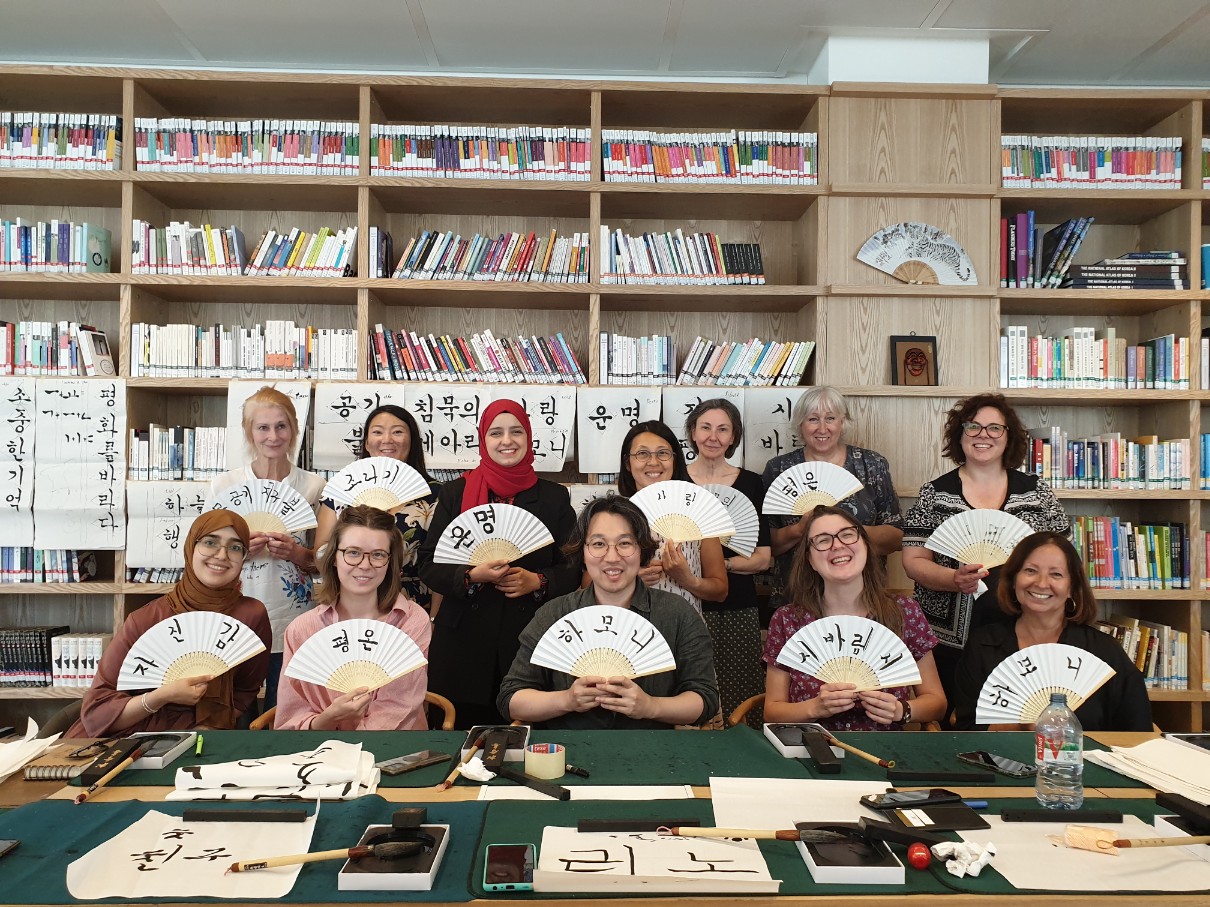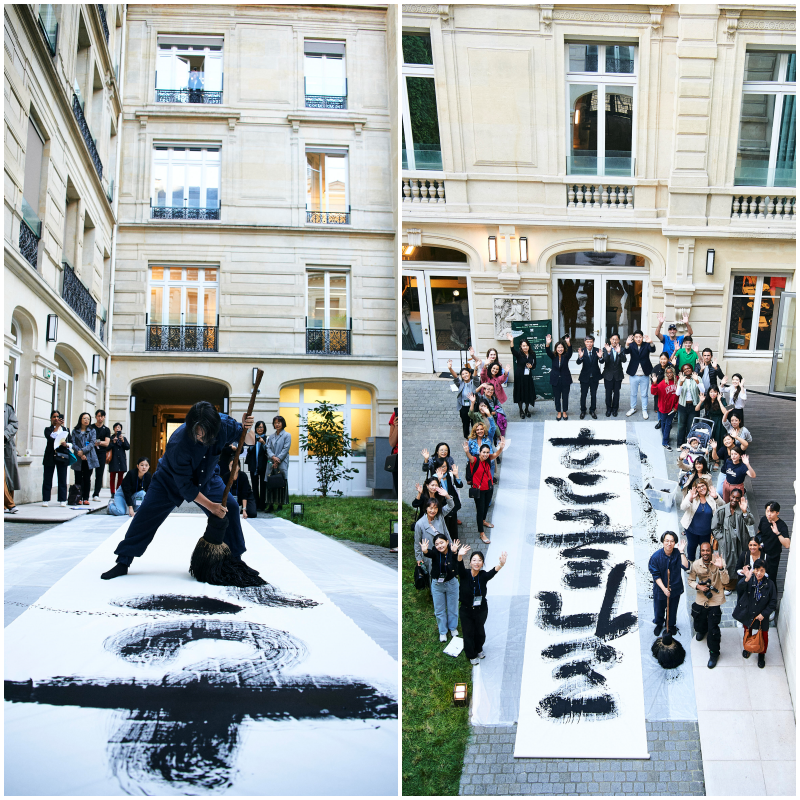- 한국어
- English
- 日本語
- 中文
- العربية
- Español
- Français
- Deutsch
- Pусский
- Tiếng Việt
- Indonesian
By Myrtle Iris Villaraza from Philippines
A Korean art form that I'm interested in learning is seoye (traditional calligraphy). While searching for information on it, I came across Kim Jeoung-hee, a traditional calligraphy artist who lives near Paris and works as a seoye instructor at the Korean Cultural Center (KCC) in Brussels, Belgium.
Kim also does glass sculptures, installations, paintings and performance art. In an email interview with him held between November last year and this month, he elaborated on his experiences and insights as a seoye artist and instructor.
Below are excerpts from the interview.

Calligraphy artist Kim Jeoung-hee Kim (center) and participants in the spring calligraphy workshop at the KCC in Brussels in June 2023 show their works. (KCC in Brussels)
How long have you been teaching Korean calligraphy at the KCC in Brussels?
I started in September 2014.
Why do you think seoye is an important part of Korean culture?
Hangeul is very important in Korean culture. I think seoye is an artistic way to show the Korean alphabet, which has a simple and uncomplicated linguistic structure of 24 consonants and vowels.
You have the same name as a great calligrapher from the Joseon Dynasty.
I have the same name as Kim Jeong-hee, a famous calligrapher (1786-1856) from the Joseon Dynasty. I feel very honored but try my best not to imitate someone else. The Hanja (Chinese script) version of my given name Jeong-hee means "shine brightly."
Why did you pursue seoye as a career?
I didn't have a degree from a prestigious Korean art university or good connections, so I decided to exhibit my skills by entering a calligraphy contest. This was how I gained recognition and began my work, and it led me to start my career as a calligraphy teacher and artist. I'd wanted to be a teacher since childhood, as I like teaching students.

Artist Kim Jeoung-hee in October 2023 gives a seoye demonstration at a Hangeul Day event held at the KCC in Paris. (King Sejong Institute)
You held a calligraphy demonstration in October last year at the KCC in Paris at a Hangeul Day event.
I received a call from King Sejong Institute about the event, and to prepare for my demonstration, I underwent training for two weeks. I practiced to gain an understanding of the background music and studied it. I was so nervous during the demonstration that despite many spectators around me, I could focus only on the brush, ink, background music and myself.
What tips do you have for those interested in learning Korean calligraphy?
Learn calligraphy and Korean culture step by step, and it would be great to learn Hangeul, too. Calligraphy isn't difficult because you don't have write it beautifully, just with your heart.
jihlee08@korea.kr
*This article is written by a Korea.net Honorary Reporter. Our group of Honorary Reporters are from all around the world, and they share with Korea.net their love and passion for all things Korean.